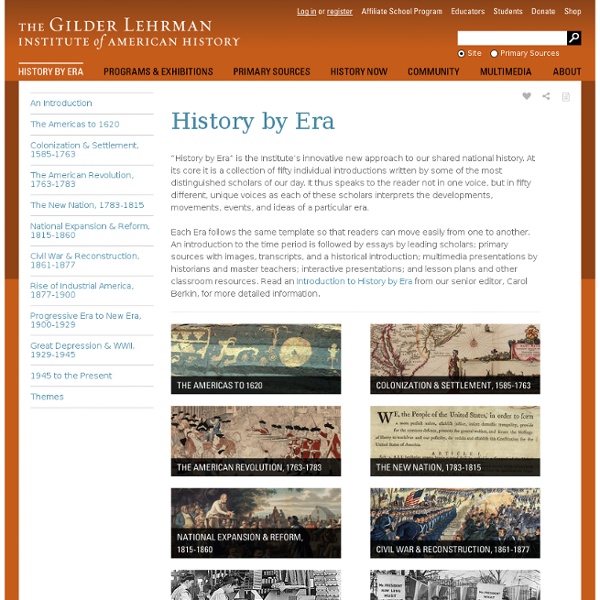



Best Sites for Primary Documents in World History Common Core offers an incentive for teachers to use historic documents to build literacy skills in a content area while empowering students to be the historian in the classroom. But document-based (DBQ) instruction in this context requires four key elements to be successful: The right documents. Knowing how to look at them. I've assigned my pre-service social studies methods class the task of designing some DBQs and I assembled a list of some of my favorite sources for finding historic documents in World History. All these sites feature good search engines and the ability to download documents for use in classroom projects. Avalon Project The Avalon Project contains a vast collection digital documents relevant to the fields of Law, History, Economics, Politics, Diplomacy and Government. Musicians and an acrobat, Smithfield Decretals (Brit. The Commons / Flickr The goal of The Commons is to share hidden treasures from the world's public photography archives.
War and medicine British Sign Language description Audio description Hippocrates is quoted as saying that ‘war is the only proper school for a surgeon’. Certainly, medical services have been associated with the military since the days of Ancient Greece. This relationship declined in the Middle Ages, but after a radical reorganisation of medicine during the 1700s the links between the two grew stronger with each passing year. War and new jobs in medicine There is much debate about how much influence war and medicine have had on each other. The human suffering caused by war War causes distress, displacement and death. Soldiers and disease Until the 1900s, wars impacted on soldiers more than the civilian population. New weapons, new wounds in the 1500s By the 1500s and 1600s guns and cannons replaced swords and spears, presenting army surgeons with new types of wounds. Developments in treatments through war The First World War: disease and developments Women in the First World War The impacts of war
Chemical Warfare and Medical Response During World War I History - World Wars: Shell Shock during World War One